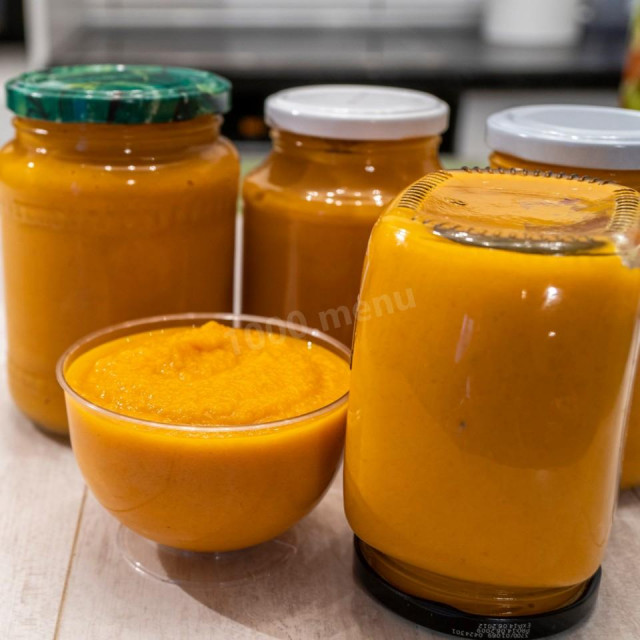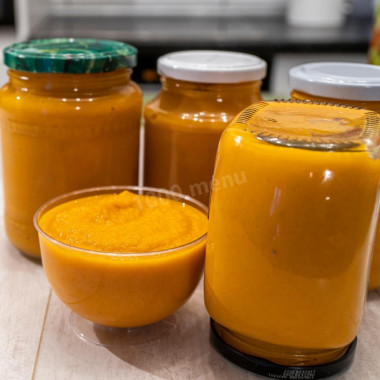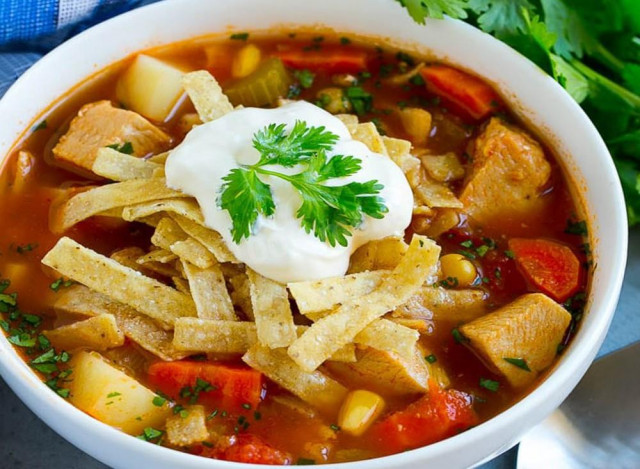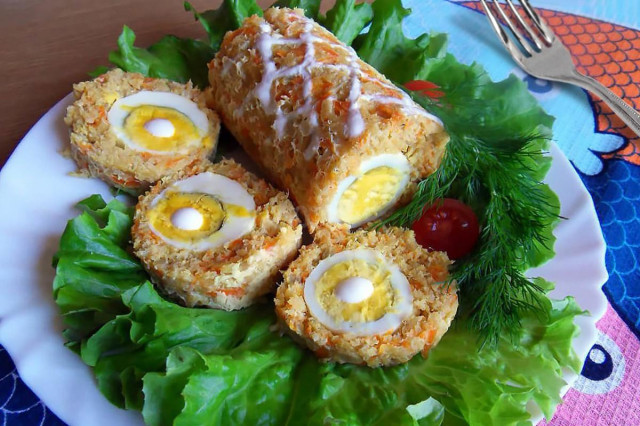Composition / ingredients
Step-by-step cooking
Step 1:
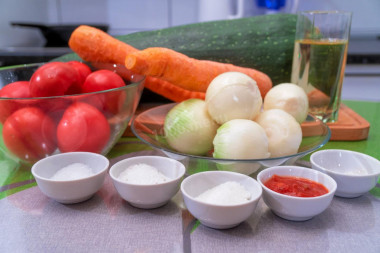
We prepare the products and spices necessary for the preparation of delicious squash caviar for the winter.
Step 2:

Cut the peel from a large zucchini.
Step 3:
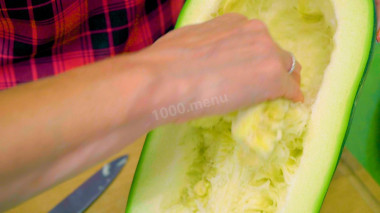
Remove all the seeds from the squash.
Step 4:

It turned out two kilograms of zucchini ready for processing.
Step 5:
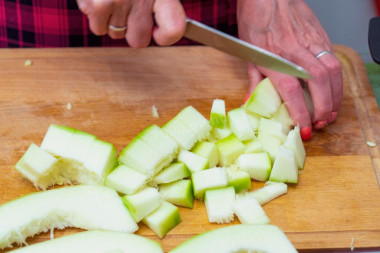
Cut the zucchini into arbitrarily large cubes.
Step 6:
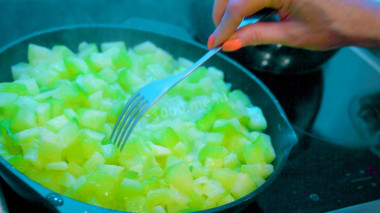
Put the diced zucchini in a large frying pan, add eighty-five grams of vegetable oil and fry for twenty minutes on the highest heat.
Step 7:
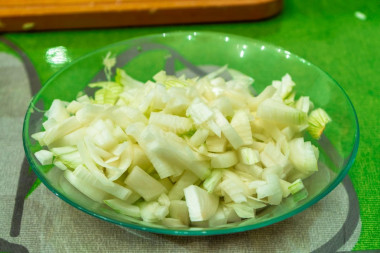
Not too finely chop six hundred grams of onions and put them on a plate.
Step 8:

Remove the stems and put six hundred grams of tomatoes in a large bowl, then pour them with boiling water.
Step 9:
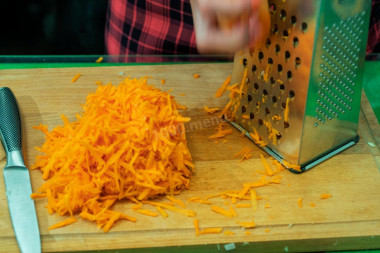
On a coarse grater, rub six hundred grams of carrots and put the fried zucchini from the pan into the pan.
Step 10:
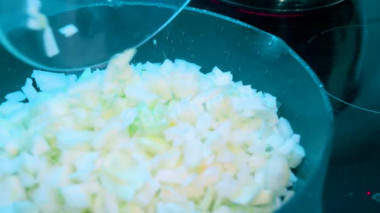
We put the chopped onion from the plate into the frying pan, add eighty-five grams of vegetable oil and stir fry well until golden.
Step 11:
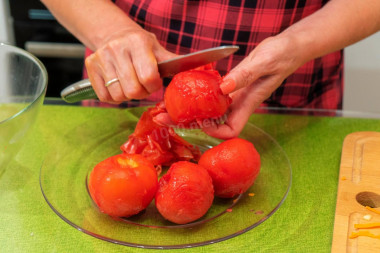
Remove the skin very carefully from the tomatoes.
Step 12:

Put the grated carrots in the frying pan to the onion and cook for fifteen minutes, stirring, then transfer to the saucepan to the zucchini.
Step 13:

Cut the peeled tomatoes into a large cube.
Step 14:
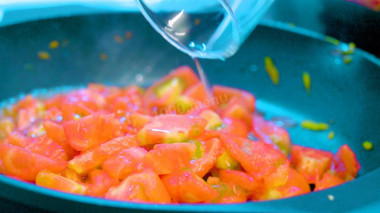
We also put tomatoes in a frying pan, add the remaining amount of vegetable oil and fry them at high temperature.
Step 15:
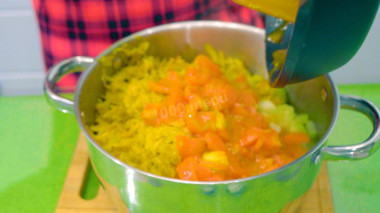
Tomatoes fried to a soft state are laid out with the rest of the vegetables in a saucepan.
Step 16:
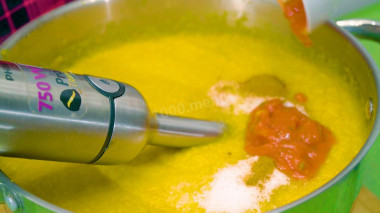
Grind the vegetables with a blender until smooth, then add one tablespoon of salt for salting, one tablespoon of sugar, half a teaspoon of ground red pepper, two tablespoons of tomato paste and mix well once more.
Step 17:
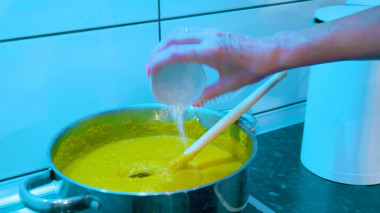
Put a saucepan with grated vegetables on the stove and turn it on low heat, stirring, cook the caviar for twenty minutes, then add one teaspoon of citric acid, mix well and cook for another five minutes until the dish is ready.
Step 18:

We lay out hot caviar in sterilized jars to the very top using a funnel.
Step 19:
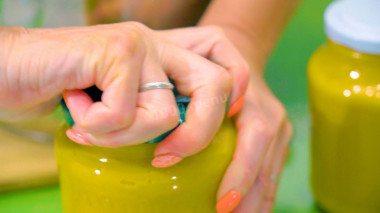
Cans with two liters of squash caviar are tightly closed with sterilized lids, turned over and covered with a thick blanket, then left to cool for several hours.
Step 20:

Cooking together, cooking simply, cooking at home the most delicious dishes from available products according to our recipes! Enjoy your meal!
Squash caviar for winter is a favorite recipe for harvesting! Harvesting zucchini for the winter is very relevant, especially in the form of delicious caviar, which never gets boring.
How many cans do not twist-everything is eaten. Zucchini is probably the most unpretentious vegetable for growing. It grows for itself and grows in any conditions. But it is so inherent in nature that the simplest is the most beautiful and useful. One problem is that he is afraid of cold weather and does not grow in winter. But we have done and will continue to do all kinds of dishes and snacks. Let's get started!
Calorie content of the products possible in the composition of the dish
- Tomatoes - 23 kcal/100g
- Zucchini - 23 kcal/100g
- Carrots - 33 kcal/100g
- Dried carrots - 275 kcal/100g
- Boiled carrots - 25 kcal/100g
- Granulated sugar - 398 kcal/100g
- Sugar - 398 kcal/100g
- Vegetable oil - 873 kcal/100g
- Tomato paste - 28 kcal/100g
- Citric acid - 0 kcal/100g
- Salt - 0 kcal/100g
- Onion - 41 kcal/100g
- Ground red pepper - 318 kcal/100g

